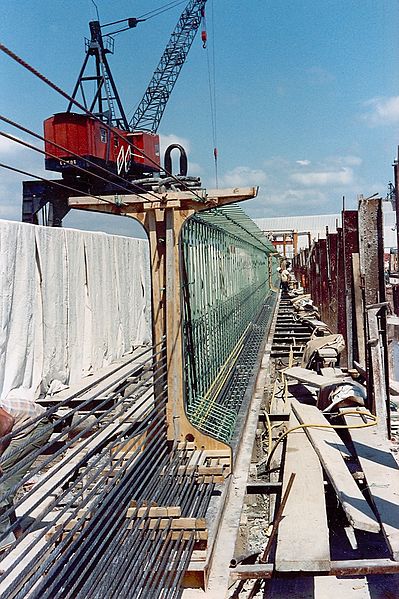Prestressed concrete is a form of concrete used in construction. It is substantially "prestressed" (compressed) during production, in a manner that strengthens it against tensile forces which will exist when in service.
Pre-tensioned bridge girder in precasting bed, with single-strand tendons exiting through the formwork
Pre-tensioned hollow-core plank being placed
Post-tensioned tendon anchorage; four-piece "lock-off" wedges are visible holding each strand
Balanced-cantilever bridge under construction. Each added segment is supported by post-tensioned tendons
Concrete is a composite material composed of aggregate bonded together with a fluid cement that cures to a solid over time. Concrete is the second-most-used substance in the world after water, and is the most widely used building material. Its usage worldwide, ton for ton, is twice that of steel, wood, plastics, and aluminium combined.
A single concrete block, as used for construction
Exterior of the Roman Pantheon, finished 128 AD, the largest unreinforced concrete dome in the world.
Interior of the Pantheon dome, seen from beneath. The concrete for the coffered dome was laid on moulds, mounted on temporary scaffolding.
Opus caementicium exposed in a characteristic Roman arch. In contrast to modern concrete structures, the concrete used in Roman buildings was usually covered with brick or stone.








